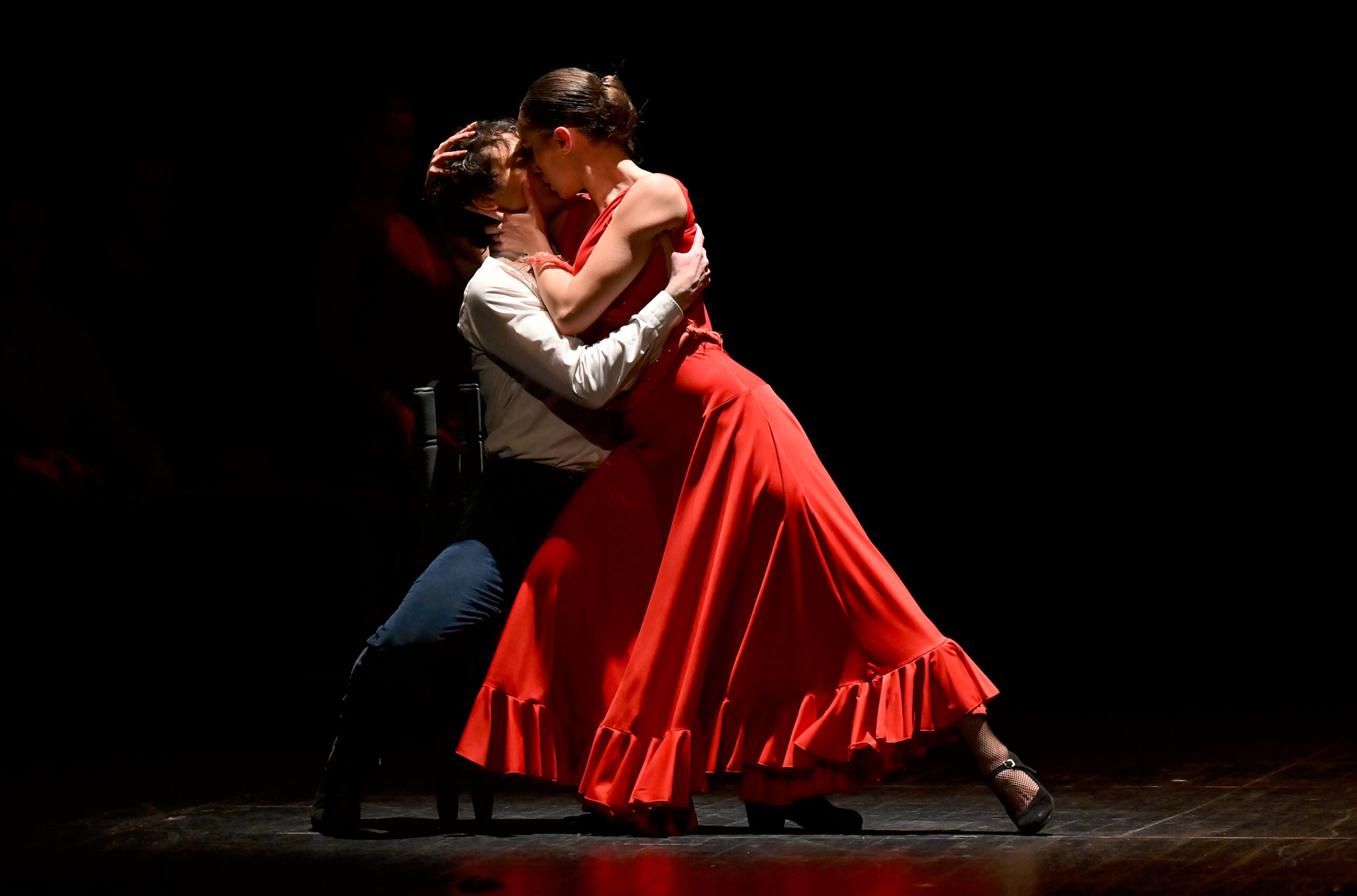“I have always liked to draw on a literary work. Why would I invent one if there are already many wonderful stories in literature?”
Gades the sailor comes out of retirement and gets back to the arena to create his last work, one that he had been thinking about for the past 15 years, ever since José Manuel Caballero Bonald had said that Lope de Vega’s classic Fuenteovejuna suited what Antonio asked of the body perfectly.
After the flamenco and Andalusian-style Bodas de Sangre, Carmen and Fuego, before definitively retiring on doctor’s orders, Antonio looks back at his time as a young man with Pilar López and his first company with the Jota, and begins to compose Fuenteovejuna.
He knows that the culture of a people is not a learned, but rather shared, experienced. In July 1994 he begins to work with a script outlined by Antonio and Caballero. He forms a team with Elvira Andrés as dance teacher, Dominique You as technical director, Juanjo Linares as folk dance instructor and Faustino Núñez, who composed the music.
With Fuenteovejuna, Antonio selects music and songs from the immense repertoire of Spanish folklore that illustrate the flow of the drama. There should mainly be music like military trumpets to illustrate the scenes with the commander. For Laurencia, Marina Claudio, Mayor Juan Quintero, the commander Candy Román. Musicians, his friends Antonio Solera and Manuel Rodríguez (Perdi) on guitars, and singers Gómez de Jerez, Manolo Sevilla, Gabriel Cortés and his wife, La Bronce, and Enrique Pantoja, of course.
The score is based on mixes of over thirty different types of music for a theatrical unity and efficiency that only Gades knew how to do by dancing it. The audiences’ almost unanimous favorite number from Fuenteovejuna is El Lavadero, the first that Gades choreographed.
Although the beginning and end are still lacking, the ballet is taking shape. Dr. José Luís Barros invites Pepe Caballero and Antonio to his house in Udra in Bueu, and Antonio also visits Faustino Núñez. Gades finishes Fuenteovejuna at Dr. Barros house.
The Antonio Gades Company returns to the stage on December 20, 1994, performing Fuenteovejuna at the Carlo Felice in Genoa, his fourth ballet and fourth premiere in a foreign country (Bodas in Roma, Carmen and Fuego in Paris). After the highly successful Genoa premiere, he starts a Japanese tour before premiering the ballet in Spain at the Maestranza in Seville. The 1995 South American tour renews his connection with his beloved continent. Fuenteovejuna hits Brazil, Argentina, Uruguay, Chile, and finally Cuba a year later (Havana, Santiago and Guantánamo). He wins the Choreographic Direction Award from the Association of Stage Directors (ADE) for Fuenteovejuna on December 11, 1995.
It was during these years that his idea of dedicating himself to teaching begins to take shape; Gades was ever able to realize this dream, and today the Antonio Gades Foundation aims to turn Gades’ vision into reality.


